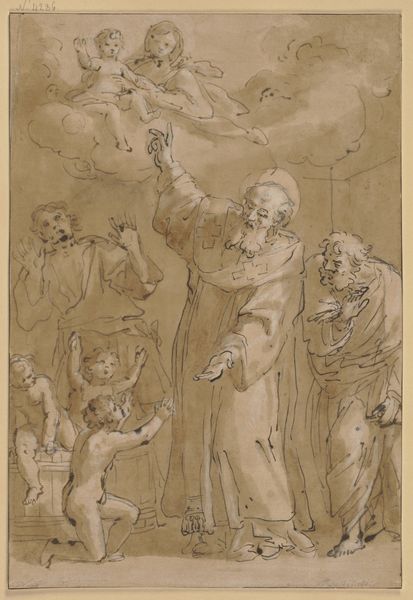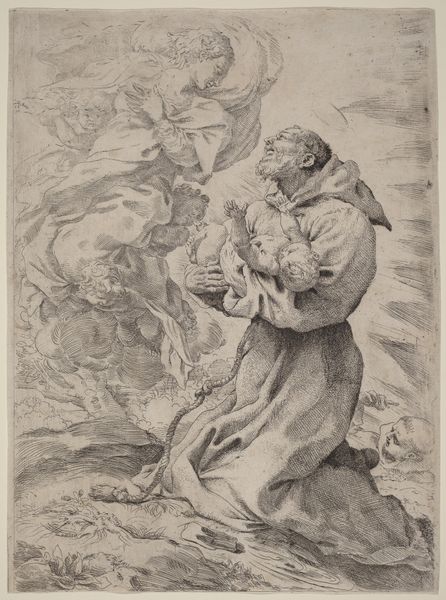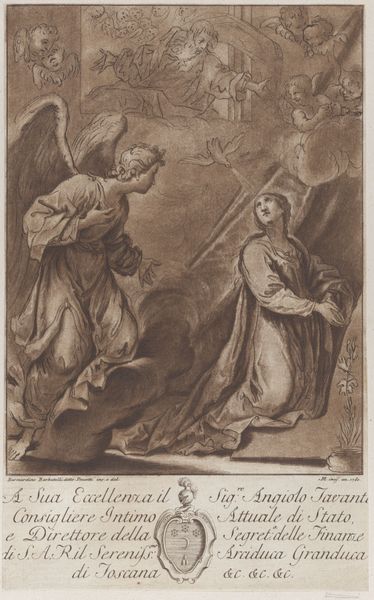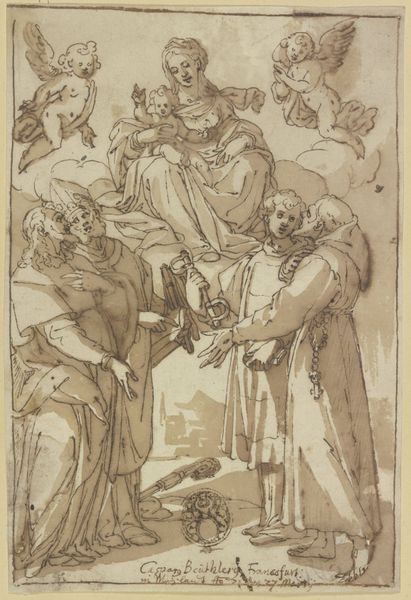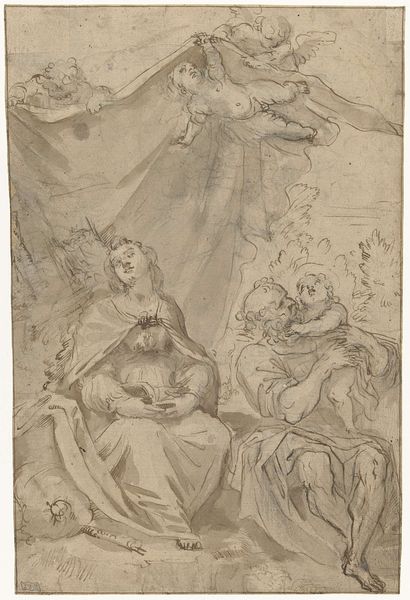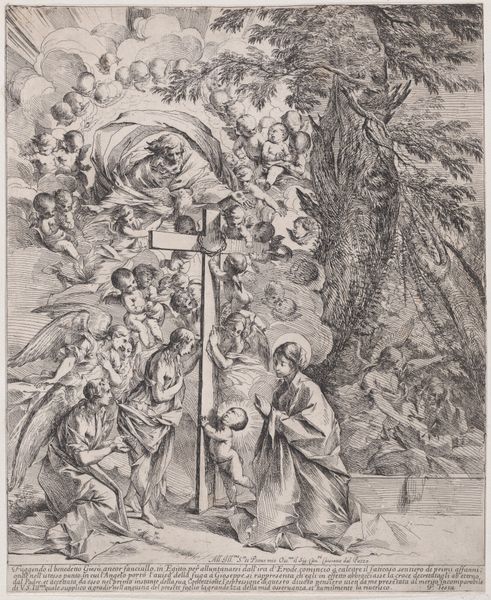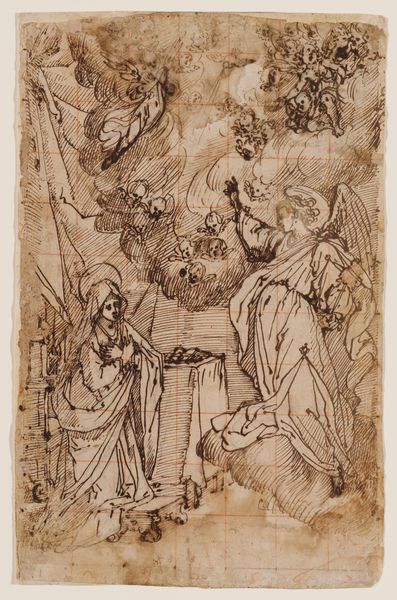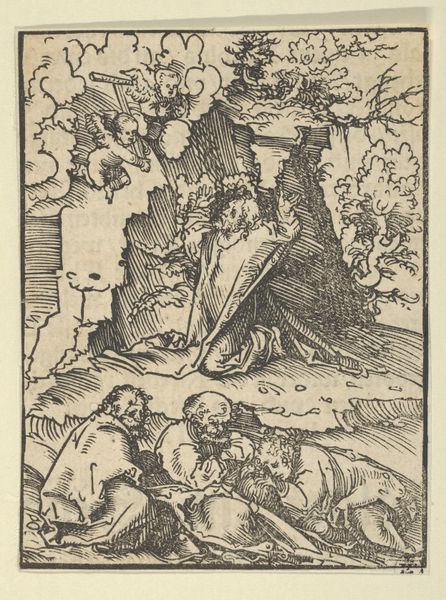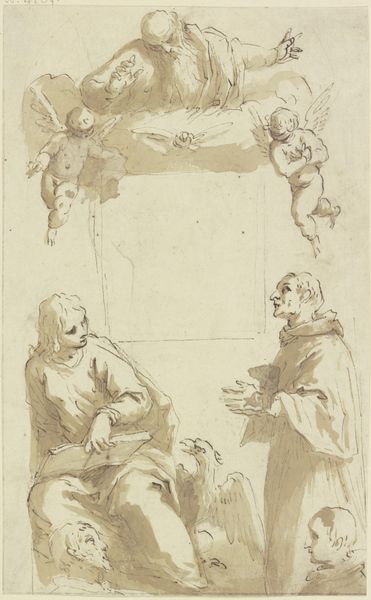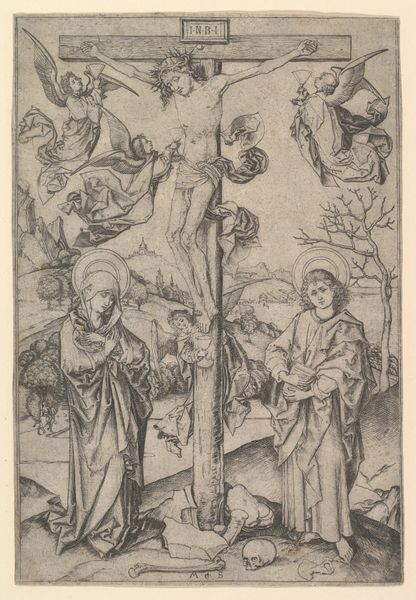
Study sheet with St Francis, an Annunciation and three studies of heads
0:00
0:00
drawing, ink, indian-ink
#
portrait
#
drawing
#
high-renaissance
#
narrative-art
#
ink
#
sketch
#
indian-ink
#
pen-ink sketch
#
13_16th-century
#
miniature
#
angel
Copyright: Public Domain
Editor: So, here we have a sheet of studies by Palma il Giovane; it includes St Francis, an Annunciation, and three heads, all done in ink. The sheet has such a scattered feeling, like a mind at work. What do you see in this piece? Curator: This sheet, far from scattered, to me reveals the interconnectedness of the spiritual and the human within the visual culture of the time. It's tempting to see these as isolated sketches, but consider how artistic patronage functioned then. Religious institutions wielded significant power, and artists like Palma weren't just creating; they were negotiating their position within a complex social and theological landscape. How do these images, of St. Francis and the Annunciation, speak to that context? Editor: I guess they weren’t just illustrating biblical stories, but maybe responding to or reinforcing specific religious ideas that were important then? The figure of Saint Francis makes me think about wealth and poverty. Curator: Precisely. Saint Francis embodies a specific kind of devotion – one rooted in humility and service to the poor. How does the artistic representation of such a figure then function ideologically? How might Palma have navigated the tensions between the Church’s wealth and Saint Francis’s values? Editor: So, by putting St. Francis on the page, Palma is making a statement about those values? Maybe he's prompting us to think about those issues of faith, poverty, and wealth. Curator: Exactly! And this “sketch” isn't just a preliminary drawing, it's also a site of negotiation, a testing ground for these ideas. And think about the agency of the viewer, both then and now. How does seeing these images change our relationship to these histories and to the material realities of art production itself? Editor: That’s a lot to consider, that even something that appears to be just a collection of drawings is involved in broader cultural and political conversations! Thanks! Curator: Of course! It also reminds us to see art as inextricably linked to the social and political worlds it inhabits.
Comments
stadelmuseum about 2 years ago
⋮
This sheet is an outstanding example of Palma’s draughtsmanship. In his sketches he frequently recorded likenesses of the people around him – here, for example, his wife Andriana. The Annunciation group, on the other hand, was presumably inspired by a Titian painting for San Domenico Maggiore in Naples; it reappears in Palma’s drawings again and again with slight variations. These studies are more than mere preparation for paintings, however – here the art of drawing clearly possesses its own intrinsic value. The calligraphic exercises attribute a specific aesthetic to the line, and the sketch thus gains autonomy as a work of art.
Join the conversation
Join millions of artists and users on Artera today and experience the ultimate creative platform.
